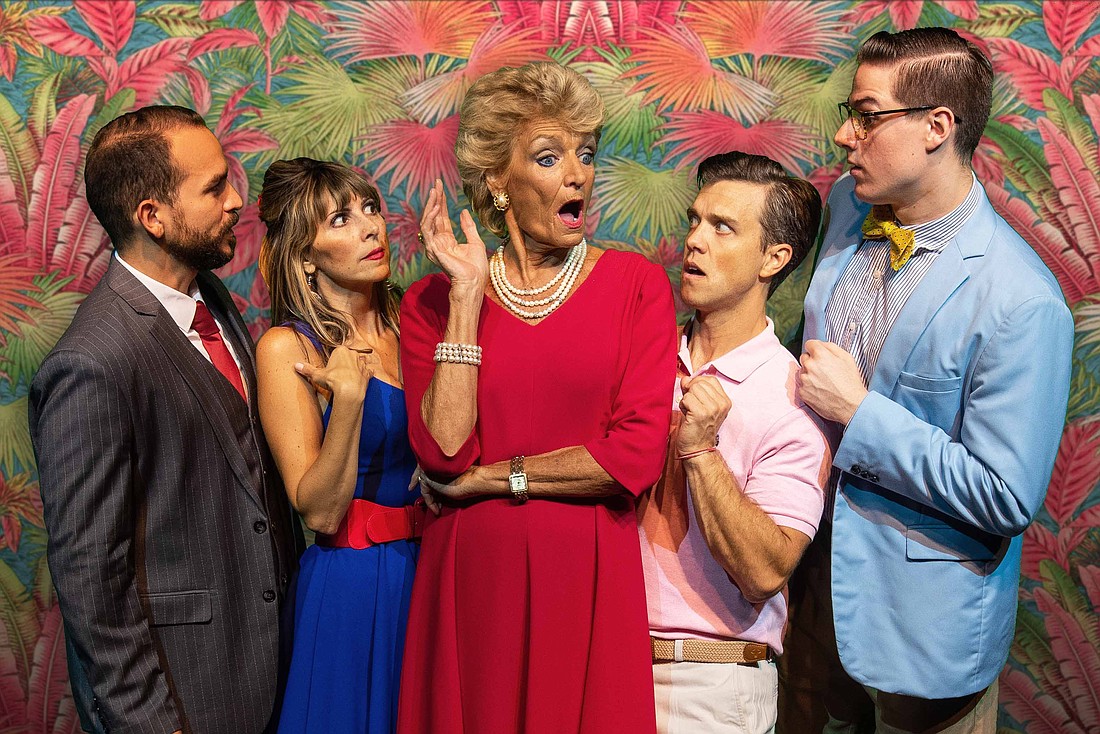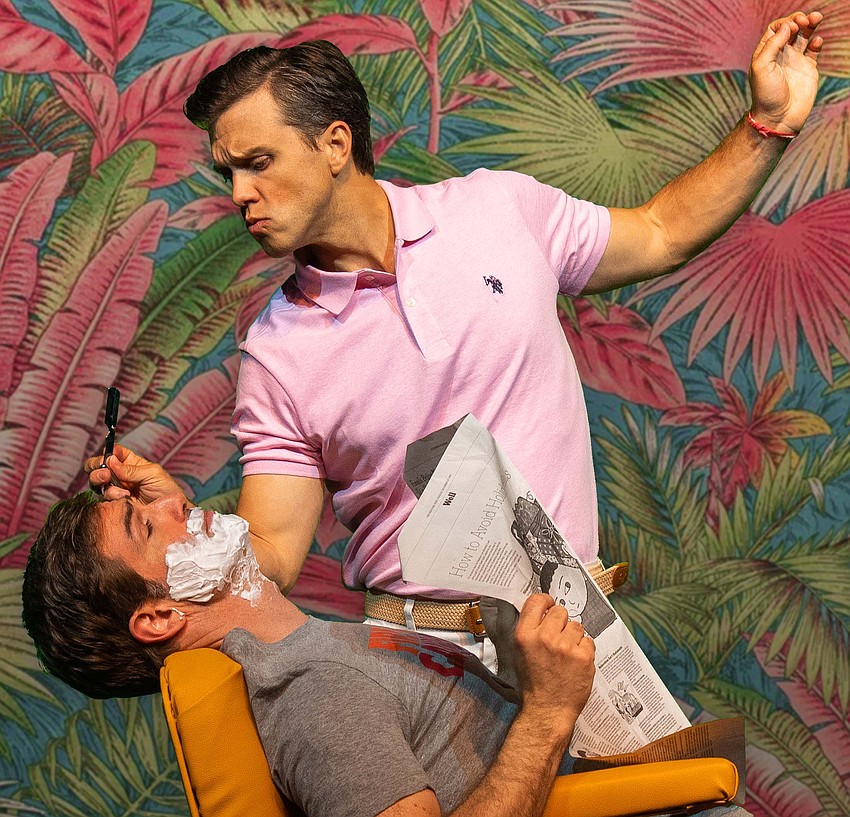- November 21, 2024
-
-
Loading

Loading

“Shear Madness” has returned to the Florida Studio Theatre stage — for the third time. What kind of play is it? Let’s just say it lives up to its name. The show’s an audience hit, but it’s hard to describe. Here goes...
In live theater, scripted plays and improvisation are usually kept as rigidly separate as peas and mashed potatoes on a high school lunch tray. If the play’s got a script, the actors and director find their own interpretation, but don’t mess with the words on the page.
“Shear Madness,” which runs through June 25, is a rare exception. It’s scripted comedy, but the script isn’t sacred. Night after night, many lines wind up on the cutting room floor.
Other dialogue is made up on the spot. An actor might do some Robin Williams-style improv. Or audience interaction might create a new direction. It’s never the same play twice.
It’s been that way since Bruce Jordan and Marilyn Abrams first launched the show in 1978. They adapted it from Paul Portner’s “Scherenschnitt,” an interactive German language play about the killing of a concert pianist.
It was no laughing matter. “I was in a production of that play,” Jordan recalls. “Portner was a Swiss psychologist. He wrote it as a serious drama about human perception — but the audience input could get so off-the-wall, it’d instantly turn into a comedy, and the house would just crack up. For our adaptation, Marilyn and I decided to take it in a comic direction.”
In Jordan and Abrams’ version, the action unfolds in the “Shear Madness” hair salon. The victim (still a pianist) is also now the landlady who lives directly above. Scissors are still the murder weapon — the unkindest cut of all. Two detectives appear, look for evidence and grill the suspects. (And everybody’s a suspect.)
At the end of the show, the audience becomes the jury that decides who’s guilty.
Each production fleshes out this story skeleton with local and timely references. The salon’s now in Sarasota. The hellish traffic on U.S. 41, Ron DeSantis and Bradenton’s arcane street names are now the comic targets of choice.
With the exception of Gina Milo, all the actors are “Shear Madness” veterans. The director’s none other than Jordan himself. When I attended a recent rehearsal, he was sitting close to the action with a big smile on his face. The actors were playing around. He lets them play and tosses out occasional notes.
The cast is rehearsing an early (pre-murder) scene. The laconic Nick (Gil Brady) sits in the barber’s chair awaiting a shave. The flamboyant Tony (Jordan Ahnquist) hops around him with nonstop chatter and the attention span of a West Highland Terrier. He’s giving Nick directions to his Bradenton house:

Tony: "It’s real easy to get to. You just hop on U.S. 41. It turns to 14th Street West, but keep going. You’ll go past the Walmart, the wastewater treatment plant, the other Walmart, then follow …"
Nick: "Whoa! Stop with the directions, ’cause I am never going to Bradenton …"
Jordan rewinds the scene. The actors replay it a few times and sprinkle in more local references, while the director and the other actors shout out suggestions.
Along with tweaking the dialogue, Jordan also fine-tunes the movement. In the next scene, Milo’s character Barb appears — the salon’s other hairdresser. They cross the space, then turn and go in opposite directions. At the turn, they almost collide — but spot each other just in time.
“Do it again, but don’t make eye contact,” Jordan suggests. “It’ll be funnier that way.”
The actors repeat the scene. Tony’s lost in thought, a motormouth as usual. He’s oblivious to Barb’s vector of motion. At the turn, he almost ploughs into Barb. But he doesn’t even notice the near-collision.
The director’s right. The scene is funnier. But it’s only one of many.
“Shear Madness” is packed with physical comedy. It’s as much dance as dialogue. Along with being a director/playwright, Jordan’s also a choreographer.
At the break, the actors in the show express their love for “Shear Madness.” Its unpredictable improv isn’t their usual wheelhouse — and that’s why they love it. They get a kick out of the collaborative nature of the play, and their freedom to change lines and add new bits here and there.
Brady sums it up best. “There’s a reason we keep coming back to ‘Shear Madness,’” he says. “It’s the same reason audiences keep coming back. This play is so much fun. It’s insanely fun! And it never gets old because it changes every time.”
This article has been updated with the extended closing date.